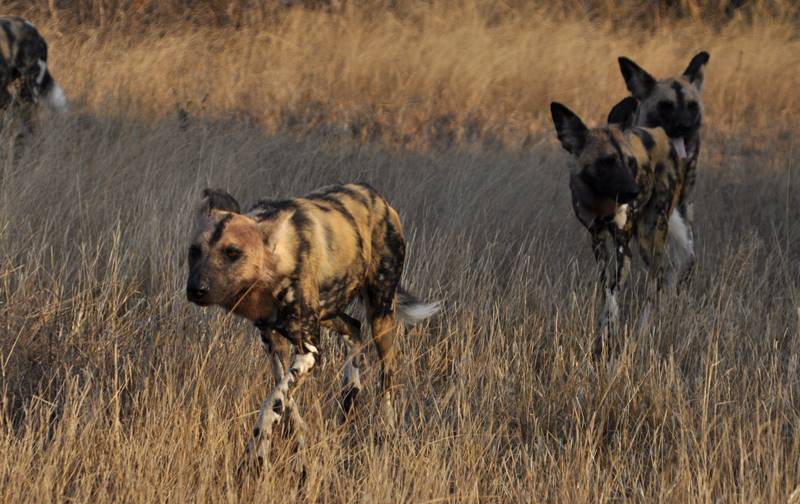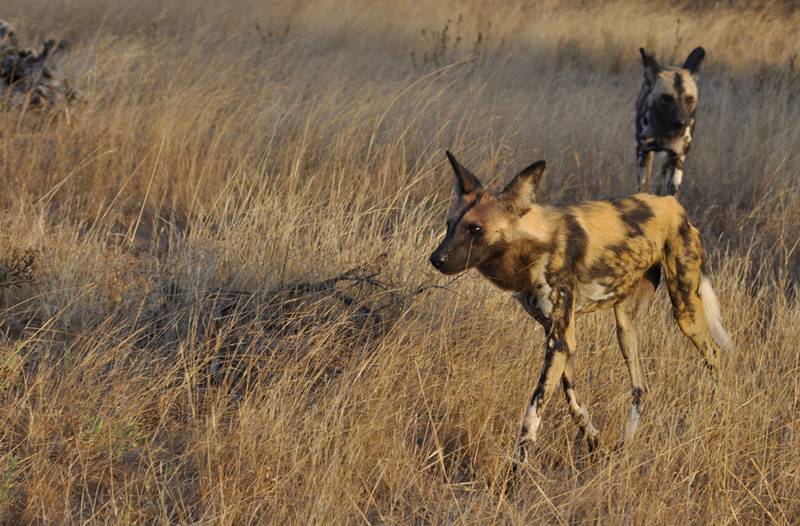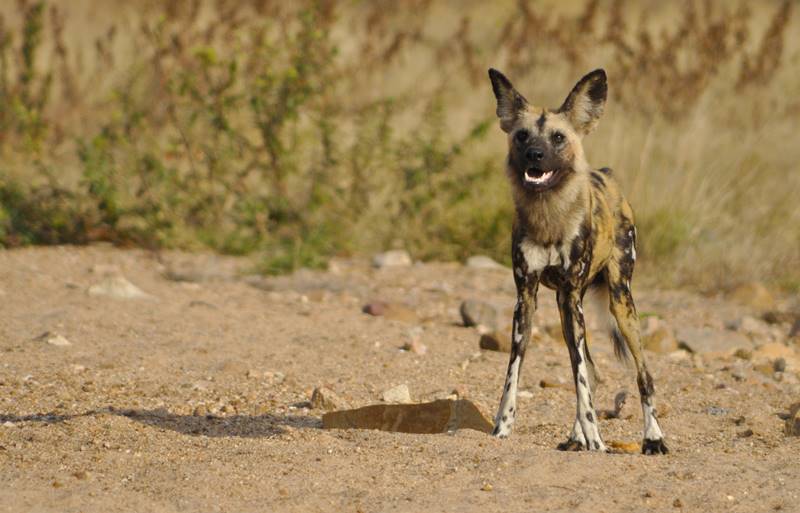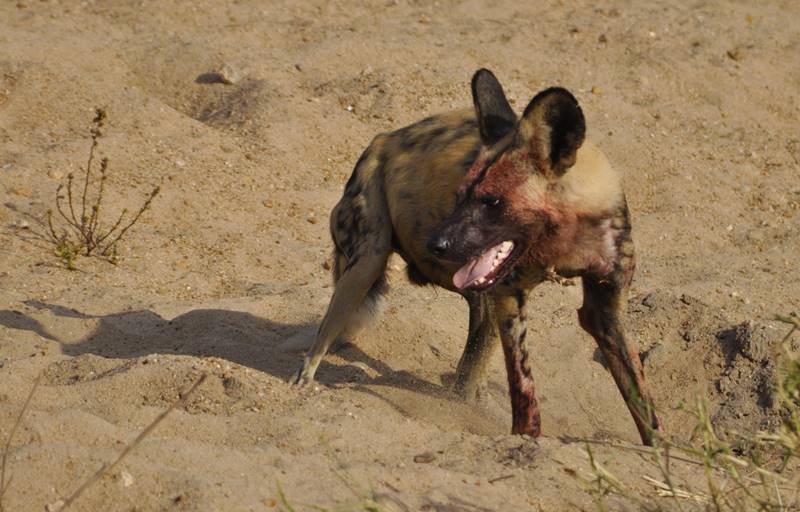Wild Dogs on Film – by Chloe Cooper, photos and video by Kevin MacLaughlin
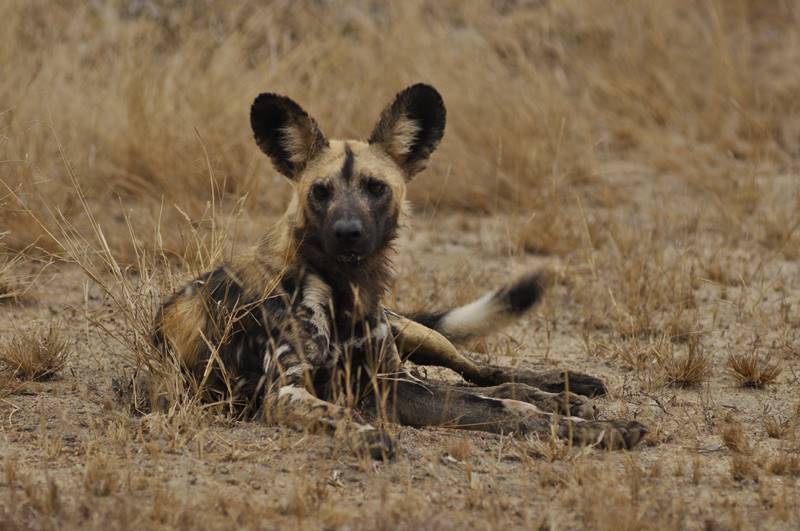
African wild dogs, also know as Cape hunting dogs, and painted dogs are purely carnivorous, and they are very good at it. Their co-operative breeding behaviour and incredible social structure means that the whole pack (can reach up to 30 individuals) works together to support the breeding effort and the strength and survival of the pack. It is quite unique, especially considering that only one female (the alpha female) breeds at a time, and that usually only the alpha male sires the pups during his reign. Sadly, these remarkable canids are severely endangered (2nd most endangered carnivore in Africa) due to habitat fragmentation and conflict with humans, and it is estimated that not more than 6000 individuals (an optimistic number) exist in the wild.
Recently, at Africa on Foot and nThambo Tree Camp in the Klaserie Private Nature Reserve, these rare predators were seen gallivanting through the area, and guests were lucky enough to get them on game drive. A short video capturing the scene was taken by John Dixon from Africa on Foot:
Wild dogs are known to move through the area fairly often; however, their presence is unpredictable, as their home ranges are very large. In the Kruger, the average home range occupied by one pack is 450 square kilometres, and in larger areas like the central Kalahari in Botswana, the home ranges can extend up to a staggering 4500 square kilometres!
With an innate instinct to protect and strengthen their pack, wild dogs readily and quickly adopt pups whose mothers have died, and have even been known to feed captive pups through the bars of a cage during a reintroduction operation (Wild Ways, Peter Apps, 2014). The pack consists of the alpha pair and subordinate family members, which take turns to act as ‘babysitter’ when there are young pups in the den. Once the pack returns from a hunt, the babysitter will ‘beg’ for food by whining and licking its peers’ faces. The begging evokes an involuntary act of regurgitation and chunks of meat are brought up to feed the babysitter.
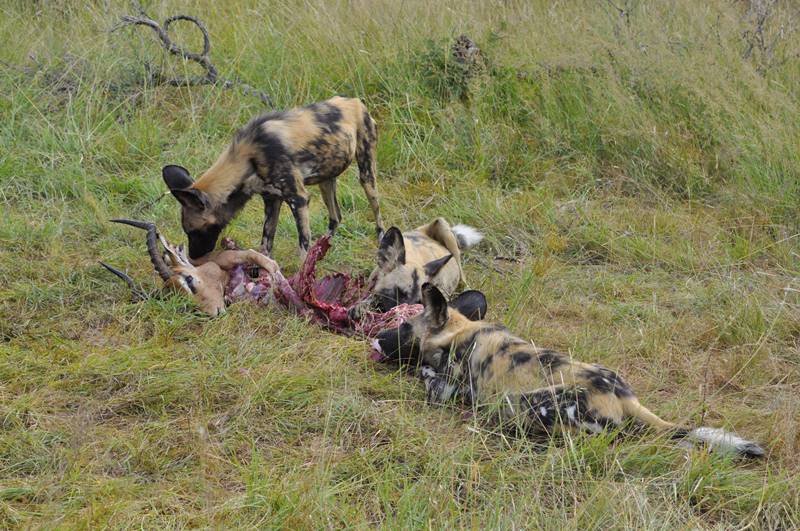
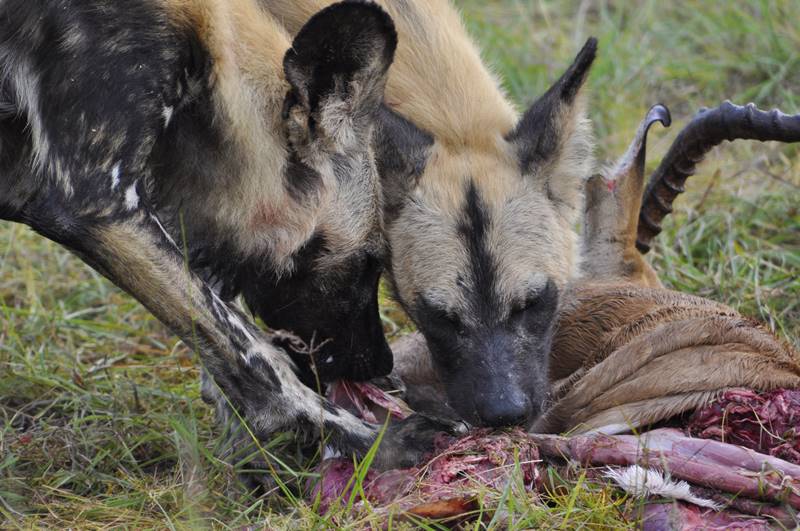

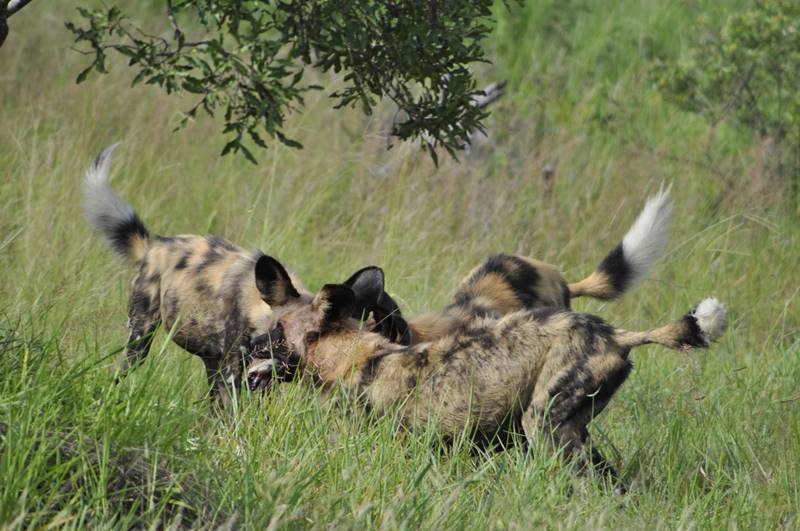
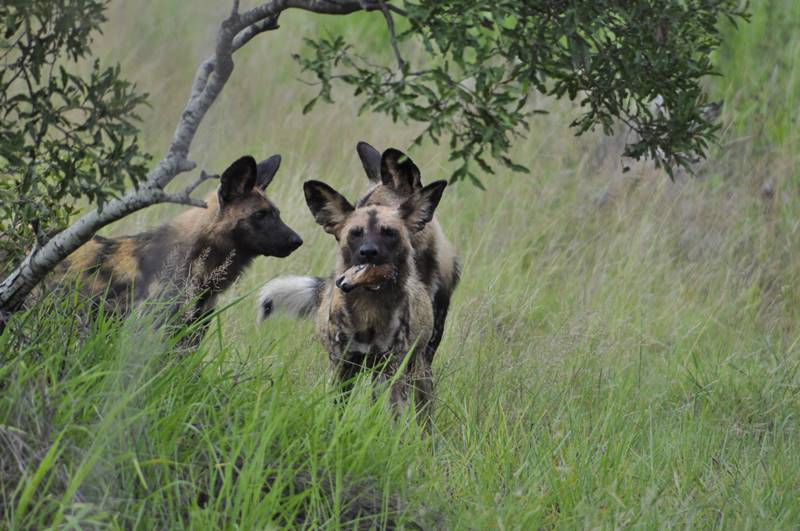
3 Months after the birth of a litter of pups, the pack will begin to move around their home range again, starting at about 5-10 kilometres a day. Only at 2 years old are the pups ready to take part in hunts, but only at 3 years old will they be effectively participating in the feeding activity. Wild dogs can live for up to 12 years, and each litter of pups averages at around 7-10 individuals. They are predated on by lions, leopards, and hyenas; however, their diurnal hunting preferences keep them out of the way of the competition.
Here’s to many more African wild dog sightings in the years to come!
